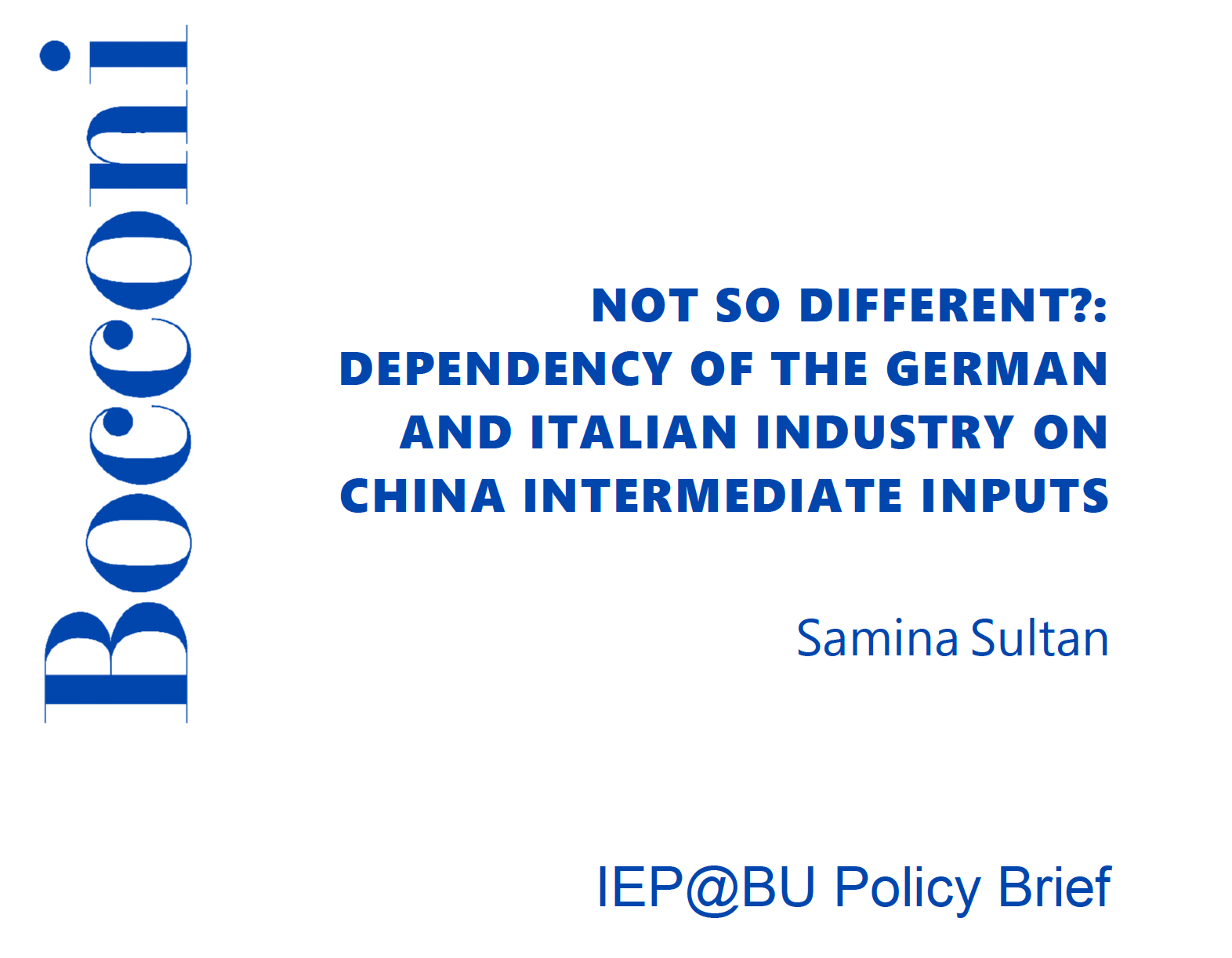Policy Brief - Not so Different? Dependency of the German and Italian Industry on China Intermediate Inputs
It is often assumed that Germany’s economic relations with China are so important that Berlin tends to take a softer stance on China-EU relations than its EU partners – or at least that this used to be the case until most recently. In particular, it is feared that German industry might be more vulnerable to disruptions of the supply of Chinese inputs than other European countries. However, this impression of a greater dependency of German industry and its supply chains from China is not borne out by the data.

-
FilePB15_Sultan.pdf (419.69 KB)
Executive Summary
On average the German and Italian industry display a very similar intermediate input dependence on China, whether accounting for domestic inputs or not. Thus, the data does not prove the assumption that Germany is particular in that respect. With an industry average of around 7 percent of foreign intermediate inputs, the dependence on China also does not seem extraordinarily high for both countries.
The picture becomes more nuanced when focusing on the individual industrial sectors. In Germany, the share of Chinese intermediate inputs is highest in computer, electronic and optical products (ISIC 26) reaching around 22 percent of all foreign intermediate inputs.
Italy also obtains over 15 percent of its foreign intermediate inputs in that sector from China. However, Italy is most dependent on Chinese intermediate inputs for Textiles, wearing apparel, leather and related products (ISIC 13-15) with around 20 percent. This kind of dependence on Chinese intermediate inputs at the sectoral level warrants caution – particularly if it affects high-tech sectors, where China strives for strategic dominance.
Both Germany and Italy have several sectors that contribute significantly to value added and are also highly reliant on intermediate inputs from China. For instance, Machinery and equipment n.e.c (ISIC 28). However, while Germany has a sector – Motor vehicles, trailers and semi-trailers (ISIC 29) – that accounts substantially to value added and at the same time is less dependent on Chinese intermediate inputs, Italy lacks such a sector. In contrast, in Italy the sector that relies most on Chinese intermediate inputs – Wearing apparel, leather and related products (ISIC 13-15) – is also among those that account most to value added.
Thus, this Policy Brief emphasizes the importance of the ongoing discussion in the EU of diversification from China. This is best achieved in the short term by broadening trade relations with other countries as suppliers and customers for the German and the Italian industry, in order to reduce dependencies on China. It is therefore vital, that the EU gives greater priority to successful trade negotiations with countries in the Indo-Pacific region or Latin America.
IEP@BU does not express opinions of its own. The opinions expressed in this publication are those of the authors. Any errors or omissions are the responsibility of the authors.
